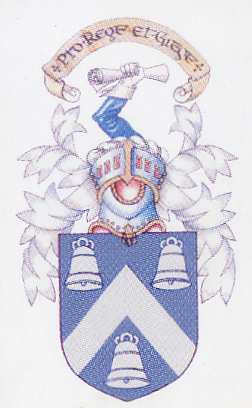|
Former Pupil Biographies
Professor William McIntosh (1838 - 1931)
| The creation of a permanent marine laboratory was the
dream of local teenager, William McIntosh, who went on to become one
of the leading zoologists of his generation. His father, John
McIntosh, was a prominent businessman who had 5 daughters and a son by
his wife Eliza. William McIntosh started his academic career at Madras
College in 1845, later entering the University of St Andrews at the
age of 15 to follow a well-rounded education in classics, mathematics,
French, political economy and the sciences. His life-long interest in
natural history and in collecting marine creatures was already
established by the time he entered Edinburgh University to study
Medicine in 1857. Indeed, whilst at Edinburgh, he carried out
experiments and wrote a prize winning thesis on the nervous system and
behaviour of the shore crab. |
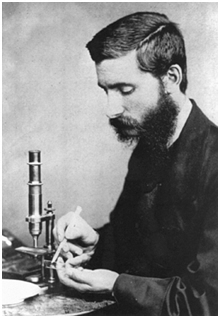 |
After graduating in 1860 McIntosh took up a position as an assistant
physician at Murray's Hospital, a Mental Institution in Perth. The
Physician Superintendent, Dr Lauder Lindsay, was a keen botanist, and he
had equipped the hospital with a Natural History Museum where McIntosh
gave lectures in Zoology for the benefit of the patients. McIntosh
published several papers and started experiments on the development of
salmon eggs using tanks set up in his bedroom. His museum displays and
publications greatly benefited from the artistic talents of his sister
Roberta who was to later assist him in many of his most important
projects. McIntosh was appointed Superintendent of the new Murthly Mental
Hospital, outside Perth, in 1863 thus acquiring the stability and
financial resources needed to continue his interests in Zoology. He was
never to marry, and something of his single minded pursuit of knowledge
can be judged from his assertion that "No man who joined Bonhomie to wine
and women could qualify as a true votary of Science". McIntosh was a
Founding member of the St Andrews Temperance Society.
|
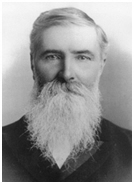 |
Whilst running the mental hospital McIntosh's studies
of marine life continued using material collected at St Andrews. In
1873, British Annelids Vol. 1 Nemertea was published by the Ray
Society; this was the first of a classic series of monographs, the
preparation of which was to occupy most of the rest of his life
McIntosh also was involved in the analysis of material from the
Porcupine and Challenger Expeditions which led to a revolution in our
understanding of life in the deep sea. Honours followed his many
scientific achievements, including election to Fellowships of the
Royal Society of Edinburgh in 1869 and the Royal Society of London in
1877. |
After several failed attempts to gain an academic position, McIntosh was
finally appointed Professor of Civil and Natural History in his home town
at the age of 44 in 1882. The following year he was recruited to the
Trawling Commission which was chaired by Lord Dalhousie and included
Thomas Henry Huxley as a member. At that time, traditional sail-powered
yawls and small boats which fished using baited hooks were being joined by
steam boats which could drag heavy trawls. The Trawling Commission was
charged with assessing the impact of these technological advances. At St
Andrews, McIntosh set about analysing trawl contents from the east coast
of Scotland and rearing fish to describe their developmental stages. He
discovered that the eggs of most commercially important fish floated and
that therefore the spawning grounds were not destroyed by trawling. The
Commission proposed the setting up of a 3 mile limit reserved for line
fisherman and scientific trawling. At the time there still was a
significant fishing fleet operating from the harbour at St Andrews.
The fishermen were so incensed by the outcome of the
Trawling Commission that on the 6th March 1885 they marched to
McIntosh's home in Hope Street and burned an effigy in a noisy
demonstration. In 1884 McIntosh's dream of a permanent marine
laboratory was realised with the opening of the St Andrews Fisheries
Laboratory with support from the Fisheries Board of Scotland. St
Andrews University had then only about 200 students. Research in
marine biology, however, flourished with the opening of the Gatty
Marine Laboratory in 1896. This was a purpose built stone building
with much improved facilities. McIntosh enjoyed a long and productive
career producing more than 350 scientific publications before finally
retiring from his Chair at the age of 76 in 1917. His successor, Sir
D'Arcy Wentworth Thompson, moved from Queen's College Dundee to take
over the Chair of Natural History. D'Arcy had little use for the Gatty
which was closed by the Court in 1918. McIntosh, however, could not
accept that his scientific career was over and he continued to occupy
a room at the Gatty, supporting his own work and organising Open Days
and Conversaziones for the public with his sister Agnes. The last of 7
volumes of British Annelids was published by the Ray Society in 1923.
McIntosh caught a chill and died on 1st April 1931. His lasting
legacies are his published works and the Gatty Marine Laboratory.
|
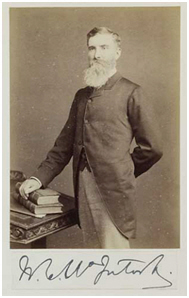 |
|
.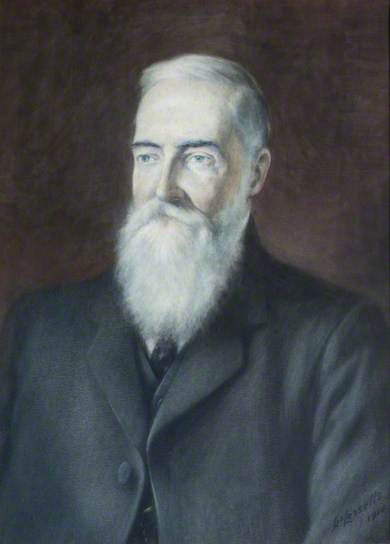 |
This portrait painted in 1910 is by James Lessels who was was the Art
and Drawing teacher at Madras College at that time. The
Madras College Magazine for New Year 1911
reported:
"Professor Mclntosh is a native of St. Andrews; son of a well-known
citizen who was for many years a Councillor and Bailie of the City. The
Professor had a distinguished career at School and University, he holds
many academical degrees, and is a member of numerous Scientific Societies,
both in this country and abroad. For many years he was Physician to the
Perth District Asylum at Murthly, and in 1882 was appointed Professor of
Natural History in the University of St, Andrews, where he also holds the
posts of Director of the Museum and of the Gatty Marine Laboratory. He is
an authority on Fishery questions, and has acted on several Royal
Commissions of enquiry into that subject. He has published several works
of importance and many Memoirs on Zoological subjects, which he has
illustrated with drawings by his own hand. Professor Mclntosh attended
Madras College from 1845 to 1853, and was a distinguished pupil of Dr.
Auld and Dr. Lonie.
|
In 'The Madras College' Dr Thompson wrote:
"Professor William Mclntosh, the founder of the Gatty
Marine Laboratory, is remembered by Mclntosh Hall. "
The
Madras College Magazine for
June 1931
reported:
Professor William Carmichael Mclntosh was, probably, the oldest pupil of
the College. He remained true to the Madras until his death. The following
is an appreciation by an old St. Andrews student :—
It was with intense regret that I read in this morning's Scotsman of the
death of my old friend and former teacher in Zoology, Professor McIntosh.
Born, I think
not actually within the Burgh, but certainly within full sight of the
waters of the famous bay, Mclntosh remained to the end of his long days an
enthusiastic St. Andrean.
Often have I thought of him as a boy, wandering through the woods of Feddinch and Mount Melville observing the sequence of the seasons the
death and desolation of winter, and the splendid renovations of spring.
Below, remote for his little feet, lay the shining sea, continually
changing, always old, yet perpetually new. With what delight would the
juvenile naturalist first tread the yellow sands and gather the shells and
urchins and corallines that were to kindle within him the fire but only
now extinguished.
A first-class anatomist, and one who had disciplined himself in the hard
school of rigorous comparative morphology, Mclntosh was an encyclopaedic
zoologist.
Theoretical matters seemed little to interest him, and these he rarely
touched. Others with the requisite qualifications will testify to his
colossal labours in monographing the Nemerteans and British marine
annelids, as well as his magnificent contributions to the embryogeny and
life-histories of the food-fishes. Yet though a prince of researchers,
Mclntosh as a Professor was not entirely successful. He was a fluent and
clear speaker, packed with his subject, but it seemed to be difficult for
him to realise how easily a student's notebook could be thrown into
confusion. Thus, often after starting a discourse, he would suddenly
remember something that he ought to have incorporated in the previous
day's lecture, and thereupon he would digress, not always, be it stated,
with profitable results to his class. In the laboratory or at examinations
he delighted to come in wearing a black velvet skull cap and carrying a
diminutive pointer, which he used effectively in oralising the students,
either about their dissections or the multitudinous drawings that ornamented the walls. Then it was that his range and facile mastery were
most potently conveyed.
A curious and sustained formality of manner quite concealed Mclntosh's personality form the public view. Hence it was often averred that he
seemed to lack any generous endowment of a sense of humour. Hut such an
impression was wholly erroneous, better acquaintance invariably revealing
how readily a joke could vitalise his expression and deepen the blue of
his eyes. And many are the stories of a rare flavour that could be related
of old happenings at the "Gatty," or of the days when a Battery
inspection at the Kirkhill was a regular event of the academic year. The
ballast of common sense he carried in ample measure. The clue to his
success was the virtue of perseverance.
Of the highest character and most honourable in all his activities,
Mclntosh was universally esteemed. His distinction as a zoologist was
unchallenged and worldwide. .Fame ho brought beyond common knowledge to
his native land. His career, of his own selection, was a strenuous one.
Life's continent lie traversed at its widest part. Now that his spirit
soars into the in Unite, let us who knew the man stand to attention in
respectful and affectionate farewell.
|
